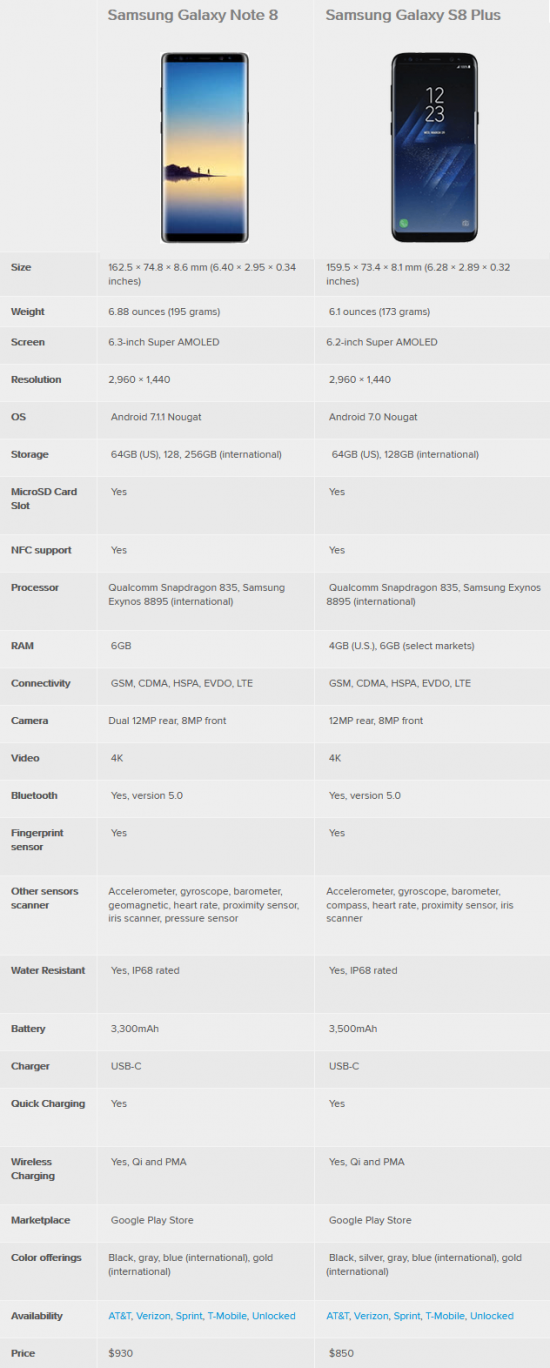Which is better note 8 or s8. Examples of photos taken with the front camera. Design, dimensions, control elements
It's time to compare freshly baked Samsung Galaxy Note 8 and Galaxy S8/S8 Plus, and thus decide what to choose. The new phablet was presented at the next Samsung Unpacked 2017 event on August 23. This is the third flagship of the Korean brand, but it differs from the other two by the presence of a powerful tool called the S Pen.
All of these devices use an almost identical hardware platform, however Galaxy Note 8 still offers more than the Galaxy S8 and Galaxy S8+, but it is noticeably more expensive. Let's break down all the differences so you can determine which is best for you.
Appearance and Design
We see a similar design in all three smartphones. The Samsung Galaxy Note 8 is quite a bit larger than the Galaxy S8+, which in turn is larger than the regular S8. Their body is made of metal and glass, which is present on both sides. The manufacturer uses very durable Corning Gorilla Glass 5 - it is hard to break and even harder to scratch.
With a pen on board, the Galaxy Note 8 is larger and heavier than the other two flagships. Its height is 162.5 mm, the width is 74.8 mm, and the thickness is 8.6 mm. It weighs 195 grams. Samsung Galaxy S8 Plus was 0.5 mm thinner, 1.5 mm narrower and 3 mm lower. And it weighs as much as 22 grams less, although everything becomes clear if you remember that the Note received significantly less powerful battery. Possessing dimensions 148.9 x 68.1 x 8 mm, Samsung S8 is the most compact. It's 40 grams lighter than the Note 8 and 22 grams lighter than the Plus.
All smartphones as one are certified to the IP68 standard, thanks to which they can be submerged under water to a depth of up to 1.5 meters. While the S8/S8 Plus screens are not capable of responding to finger touches while underwater, the S Pen of the new Note 8 works great in these conditions. This way, the user can take photos and record videos underwater or when the display is wet.

The frames on the left and right are almost invisible, but on the top and bottom they are as thin as possible. Above the screen are speaker, front camera, iris scanner, light and proximity sensors. There is nothing underneath, the Home button has become virtual, and the fingerprint sensor is located on the back, like on the Galaxy S8 and S8+. All mechanical buttons are placed equally on these three gadgets. On the left side is the volume rocker and activation of the Bixby voice assistant, and on the right is the power/lock key.
The SIM and memory card slots are located on the top of both the Note and Galaxy S8/S8 Plus. There are differences below. While the Galaxy S series devices have a speakerphone there, USB Type-C and 3.5 mm, the new Galaxy Note 8 also has a slot for the S Pen.

Display
In this area, there are even fewer differences between these smartphones. The physical resolution is the same - 2960x1440 pixels - the same aspect ratio, but the pixel density is different. The reason is that the Galaxy S8 has a 5.8-inch screen, the S8 Plus has a 6.2-inch screen, and the Note 8 has a 6.3-inch screen. Consequently, the smallest gadget boasts a density of 570 PPI, the medium - 529 PPI, and the largest - 521 PPI.
In all three cases Samsung company uses Super AMOLED technology, which is compatible with the Mobile HDR Premium standard. The picture quality, in fact, will be almost equally good on these gadgets. The maximum screen brightness will not disappoint either.
These devices, without exception, offer the functionality of an always-on screen, displaying useful information In standby. This way, you don't have to wake up your phone to see if there are any missed notifications.

Cameras
The main difference between the new product and the flagships released at the beginning of this year is its dual main camera. The Samsung Galaxy S8 and S8 Plus have regular cameras, while the Note 8 boasts a pair of 12-megapixel sensors on the back. One of them can take wide-angle photographs, and the second can zoom in without losing quality - this is a 2x zoom.
The wide-angle lens has an aperture of f/1.7, and the telephoto lens has an aperture of f/2.4. Both the S8 and its brother at one time acquired cameras with an f/1.7 aperture, so in poor lighting conditions they should take pictures just as well as the Note. The front cameras are identical on all three phones: 8-megapixel sensor, autofocus and f/1.7 aperture.

Filling
The hardware platform of the new Note has undergone changes compared to the S8, but not dramatically. These smartphones are based on the same chipset - Exynos 8895, running on clock frequency 2.3 GHz. In Samsung Galaxy Note 8, the company increased the volume random access memory from 4 to 6 gigabytes. The amount of permanent memory remains the same (64 GB), but the new device can also be purchased with 128 and 256 GB of ROM. You can increase the amount of free space using a card microSD memory on all models.
No matter how strange it may seem, but powerful battery has a 6.2-inch Plus. It received an autonomous power source with a capacity of 3500 mAh. Inside the Samsung Note 8, which is noticeably thicker than the other two devices, there is a 3,300 mAh battery, while the S8 has a 3,000 mAh battery. Time battery life we have yet to find out.
Each of the above-mentioned flagships comes with headphones from AKG. The accessory is sold separately at a price of 100 dollars or 6 thousand rubles.

Software
Samsung has released the Galaxy S8 and S8 Plus with a pre-installed operating system. Android system 7.0 Nougat, while the Note 8 came with Android 7.1.1 on board. In any case, the user receives the latest version of the Samsung Experience user interface, meaning the UI design will be the same on all three devices.
With the Galaxy Note 8, you get advanced capabilities through the S Pen. They are missing on the other two flagships. For example, by pulling out the stylus from your phone while it's in standby mode, you can quickly create a note. This pen allows you to instantly translate words from one language to another, and also create GIF animations from videos in seconds.
Price
According to available on this moment According to information, the Samsung Galaxy Note 8 in the basic configuration will be 15 thousand rubles more expensive than the Galaxy S8 with the same amount of built-in memory. Consequently, the 6.3-inch model will cost 10 thousand rubles more than the Plus.
It's up to you to decide whether it's worth paying extra for the S Pen, 6 GB of RAM and a dual main camera. By the way, the Korean manufacturer recently introduced the S8 Plus in Russia with 128 GB of ROM and 6 GB of RAM, but this version will cost you 65 thousand rubles.
Let's sum it up
If you want a phablet with a huge screen, but don't care about the S Pen and dual cameras, then it's probably better to save money by getting the Galaxy S8 Plus. In return, you get a more powerful battery, which is also very important. A fan of the Galaxy Note series will definitely take the new product and learn how to take portrait photos and surf the Internet underwater.
The Samsung Note 8 will definitely offer better performance than the Galaxy S8 thanks to its 6GB RAM. It also looks more attractive due to the fact that it is available in a variant with 256 GB of internal memory. Unfortunately, the memory card slot is hybrid on all three gadgets, so if you want to use two SIM cards at the same time, it is better to choose a more expensive model that has more free ROM space so as not to use microSD.
Presented Galaxy smartphone Note 8 almost a year after the appearance of the failed Note 7. After it there were even more successful ones flagship smartphones, including Galaxy S8+. What is the difference between them? Who will win in the confrontation between Note 8 and S8+?
The Note 8 is a larger smartphone and comes with the Samsung S-Pen stylus. This is the first smartphone for the South Korean manufacturer with, but it uses the same 8-core Snapdragon 835 processor. Both models support the Samsung Dex docking station and digital assistant. The S8+ is also an impressive device. Let's try to compare them.
Specifications
In terms of hardware characteristics, the Note 8 and S8+ have a lot in common. We have already named the processor, its performance is 27% higher compared to its predecessor Snapdragon 821. The advantage of Note 8 is the amount of RAM 6 GB versus 4 GB in the S8+. How beneficial such an increase is is debatable.
The same equality applies to permanent memory. The minimum value in both cases is 64 GB, there is a slot for a microSD memory card.
More memory means faster multitasking, but you're unlikely to open so many apps on the S8+ that it starts to slow down. However, since there are no other differences, the winner is Note 8.
Design and screen

While the Note 8 may be a little larger and heftier than the S8+, the two smartphones share the same DNA. For example, a frame. It's made from the same combination of metal and glass, and uses the same Gorilla Glass 5 with shock protection. Not much has changed here. Note 8 has a USB-C connector, 3.5 mm headphone jack, fingerprint and iris scanner. All this is available in the S8+.
Since smartphones are made from the same materials, their durability is also the same. IP68 certification means protection against water and dust. There is no protection against drops and scratches, so it is advisable to purchase a case.
The similarities extend to edge-to-edge screens. The new smartphone has a diagonal of 6.3 inches versus 6.2 inches for the S8+. Both of them have curved edges and narrow bezels at the top and bottom. Apart from the corners of the Galaxy Note 8, which taper more gradually, the devices are difficult to distinguish in appearance.
The screens themselves are also similar in specifications. It uses a bright Super AMOLED panel with a resolution of 2960 x 1440 pixels and an aspect ratio of 18.5:9.
Despite the similarities, we prefer the S8+. Its smooth curves give it a more futuristic and less aggressive look.
Autonomous operation and recharging

Battery capacity Note 3300 mAh, S8+ 3500 mAh. It’s difficult to say how much this difference affects battery life, but probably not much. With moderate use, the S8+ lasts almost the whole day, the same result is expected from the new model.
Both smartphones support Qi and PMA wireless charging standards, as well as Samsung Adaptive Fast Charging. When using a compatible adapter, they charge from zero to maximum in about 90 minutes.
Since the S8+ has a larger battery, it is named the winner at this point.
Camera

The rear camera is the main difference between these two smartphones. Note 8 was the first Samsung device with a dual camera. Both modules have a resolution of 12 megapixels, apertures f/1.7 and f/2.4. The S8+ has a 12 MP camera with f/1.7 aperture.
The dual camera has a new Live Focus mode that allows you to apply a DSLR-style blur effect before and after taking an image. Dual mode Capture captures close-up and wide-angle images simultaneously.
The S8+ has a selective focus mode that simulates the bokeh effect using software. The result does not always look natural.
On the front, the same 8 MP cameras with f/1.7 aperture are used. Judging by the quality of photos on the S8+, the Note 8's front camera will perform well in low light. In this case, the clear winner is the new smartphone.
Software

The devices run on Android with shell Samsung TouchWiz. The two versions turned out to be almost identical.
You can highlight the Bixby digital assistant, which works with ten preset Samsung apps on S8+ to provide contextual information. Both smartphones support the DeX docking station, which is sold separately. The station turns smartphones into desktop analogues personal computer. Both have an iris scanner and front-facing camera-based facial recognition, eliminating the need to enter a password when logging into the device. Note 8 runs on a more modern Android versions 7.1.1 vs Android 7.0. It is expected to appear on both devices at the beginning of the year.
There is also an App Pair function, which allows you to launch two applications simultaneously with a single click in separate screen mode. This feature is promised later on S8+.
This section goes to the Note 8.
Price
In Russia, the cheapest Note 8 at the start of sales will cost 69,990 rubles. The price for S8+ on Yandex.Market varies from 41,000 rubles. up to 60,000 rub. This is how much models with 64 GB of memory cost.
As you can see, Note 8 is more expensive. To compensate for this shortcoming, users can choose a gift when pre-ordering before September 24th. It may become samsung camera Gear 360, which separately will cost from 9,000 rubles. up to 30,000 rubles. Another option is the Galaxy Foundation Kit with a 128 GB memory card and wireless charger. How relevant this proposal is for Russia is unknown. The same can be said about the promise to reduce the price for former Galaxy Note 7 owners.
Since the Note 8 isn't on sale yet, the winner in terms of price and availability is the S8+.
Conclusion: Draw
At first glance, it seems that there are very few differences between the two smartphones. The most obvious are the stylus and dual camera. The stylus allows you to write notes when the screen is off and launch applications. The dual camera now has the ability to adjust blur after taking photos. If you need it, you'll have to pay more.
 |
 |
|
 |
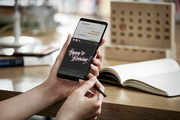 |
 |
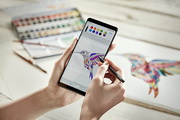 |
 |
 |
Price positioning, B2B solution, iPhone X Plus competitor
Samsung's Note line has never been massive; sales have always been tens of percent of the level of the current flagship with a larger diagonal. The reason is not only the price, but also the positioning of the device, which was aimed at three small groups - flagship lovers and geeks, as well as a business audience for whom the additional functions of the device are important, plus a small layer of those who love and know how to draw. For the last two groups, even the name itself reflected the meaning of the device: it is a notepad, but a modern, electronic notepad. But you can write with a pen, which is called the S Pen, which is initially present in a special compartment in the case and is quite convenient in everyday life.
There have never been and are no direct competitors to the Note line on the market, since no one has been able to create anything similar at the level of both software and hardware. Attempts to create similar devices were made many times, but all of them were unsuccessful. Moreover, often such devices were positioned much cheaper, but people simply ignored them - it turned out that it was important for the target audience not just to buy something with a certain stylus, it was important for them to get a variety of software, new features, and they were willing to pay for it.
The success of the Note line was unexpected; from a niche device not for everyone, the model instantly became a mass device, the company’s second flagship within a year. Before Note 5, Samsung tried to provide the very best technology in this device, but then there was a reassessment of values. Thus, Note 5 turned out to be quite unsuccessful in sales, as they refused to support memory cards, just like other devices of that generation from Samsung. For Note line consumers and Note 4 owners, this was a big blow (and Note 2 at that time as well). The index “six” was missed, and with Note 7 there was a story with fires, which could have put an end to the entire product line, but this did not happen. But again the positioning has changed a little, now Samsung is not trying to please geeks, the production cycle has changed so that the Note does not receive the latest developments in the field of chipsets and memory, it becomes an analogue of an already existing flagship. The logic of this decision is clear, the best should go to the S9, which is already in development, while the Note will actively highlight and promote its strengths.
The business audience for this device has always been strong, but today the promotion of the Note line is reaching a completely new level, as an accessory such as DeX has appeared, which turns the phone into a full-fledged computer or its like.
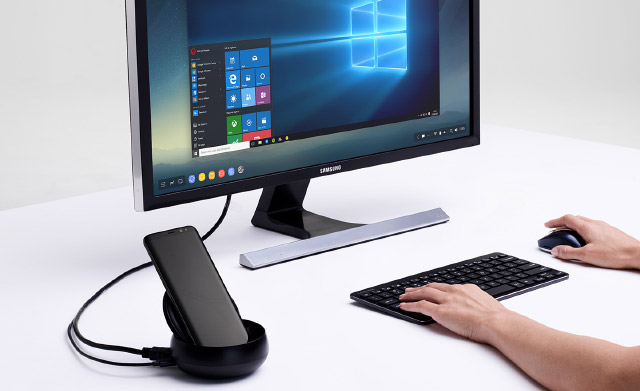
In the B2B segment, the company’s plans for Note 8 are very large; this device will be offered to corporations as part of existing and new projects, and there are no analogues to such a solution at the moment, which allows us to talk about a fairly successful implementation. I am sure that throughout the year we will hear about certain companies purchasing Note 8 for their employees. DeX will gradually begin to penetrate the corporate market, perhaps this will become a trend, they want to make something difficult here.
Market-wise, the Note 8 only has one or two competitors, and that's the iPhone 7 Plus and its sequel. The reason is that many will compare the two most expensive solutions from direct competitors, ordinary consumers that's exactly what they'll do. At the same time, they also have a seemingly similar camera solution (optical zoom), which gives even more similarity in the eyes of buyers. In principle, in this price segment there are de facto only two names - Apple and Samsung, sales of all other players amount to at most 5%, and the number of these players is more than a dozen. But consumers do not choose them, but focus only on familiar names.
Initial sales plans for Note 8 were modest, up to 10% of S8+ sales. A few months before the start of sales, after partners began to place orders, the plan was revised and increased threefold. Cause? The market believed in the product and believes that it will be in demand. Let's try to evaluate why this is so.
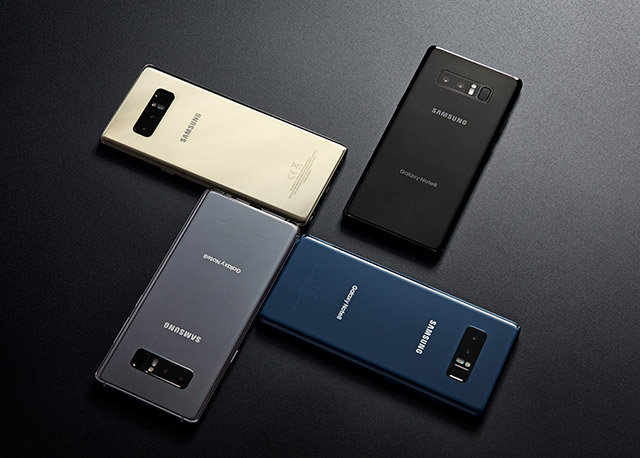
Design, dimensions, control elements
The first thing that comes to mind when you look at the Note 8 is that this is some version of the S8+, the devices are very similar. Place the S8+ next to it, and then you will notice a difference in a number of ways, but you will have to look closely. The designers tried to achieve maximum resemblance to a notepad, hence the slightly chopped edges, which in real life do not add any problems to the use of the device.


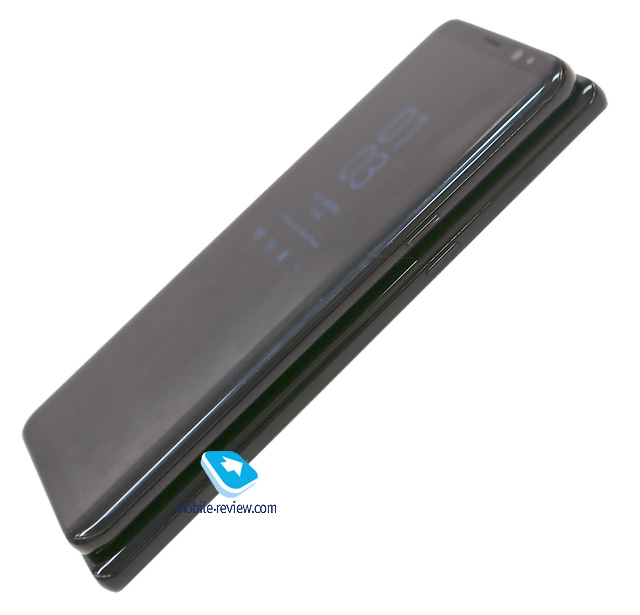

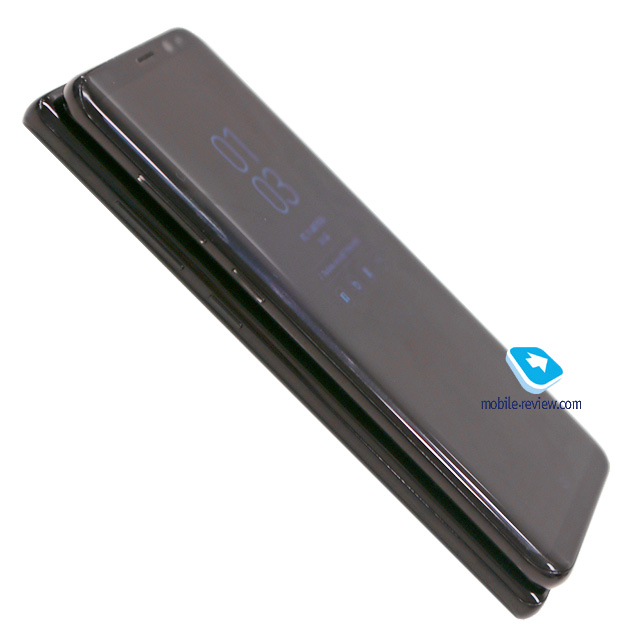
Compared to Galaxy S8+
And this model differs from previous Notes in its shape.

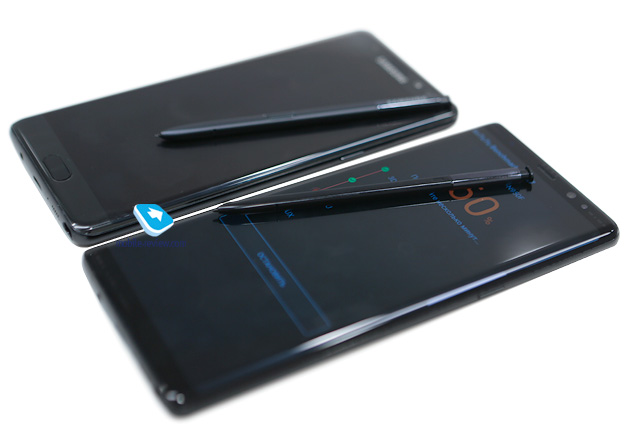

The sizes of the devices are comparable, they do not differ very much, a couple of millimeters does not allow us to say that the Note 8 is huge - it fits perfectly in the hand, is invisible in your pocket, and is convenient to use with one hand. So, the dimensions of Note 8 are 162.5 x 74.6 x 8.5 mm, in S8+ it is 159.5 x 73.4 x 8.1 mm. The exception is the fingerprint sensor, which is still located on the back surface as in the S8+, but it has been moved so that the camera window cannot be accidentally stained. Samsung was never able to make progress with an under-glass sensor; moreover, it may not be in the S9 either, since serious engineering difficulties arose, the same with Apple. It is curious that both manufacturers are trying to buy out the technology of a third company through its purchase and are struggling with their proposals, hoping that they will be the first to make such a decision.
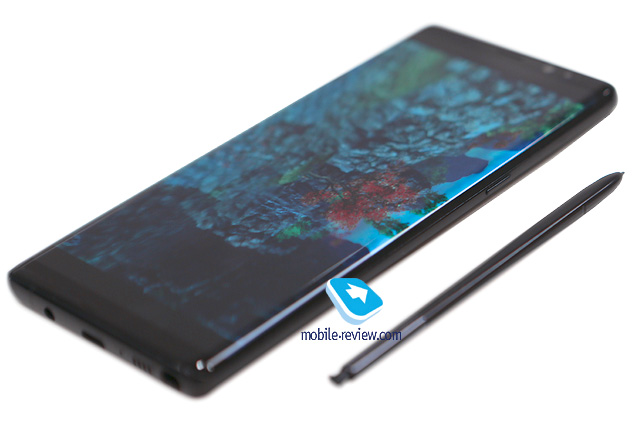

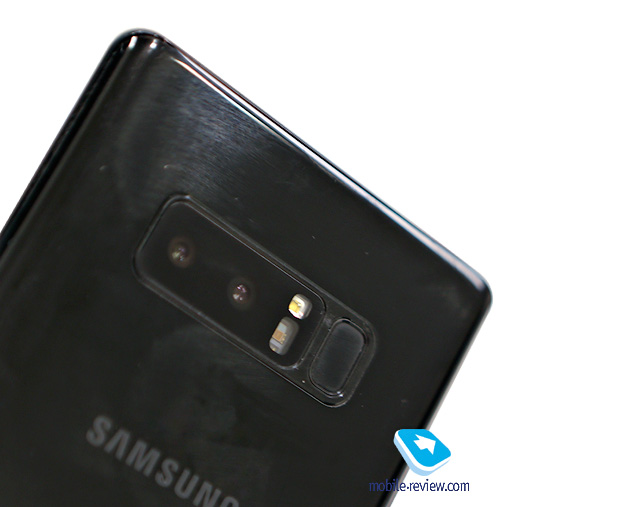
The curve of the case is felt exactly the same; Corning Gorilla Glass 5 is used (a special version without markings, it was created for this device). The IP68 protection has not gone away, the device can easily live under water. The internal layout of the device has been slightly redesigned to improve protection after accidental drops, so that no cracks occur and water cannot damage anything inside.
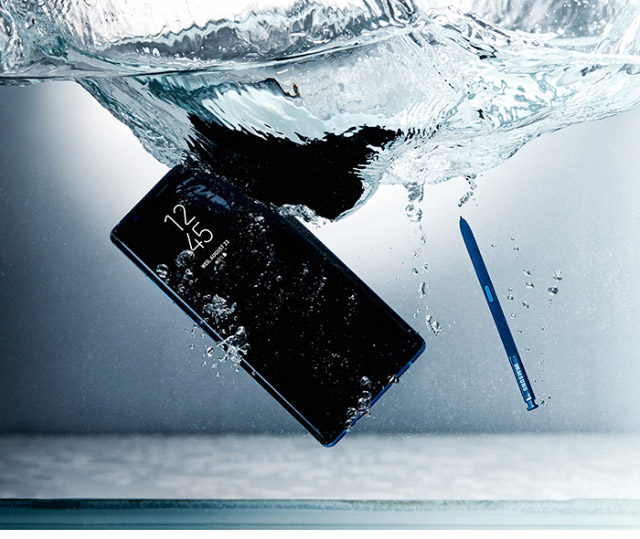
The layout of the buttons and connectors is almost exactly the same as on the G8; there is a separate Bixby key, as well as a SIM card slot combined with a memory card. Nowhere in the world will there be a device with a separate slot for two SIM cards and a memory card, only combined ones.
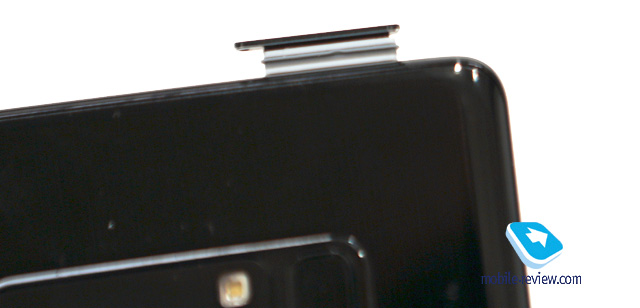

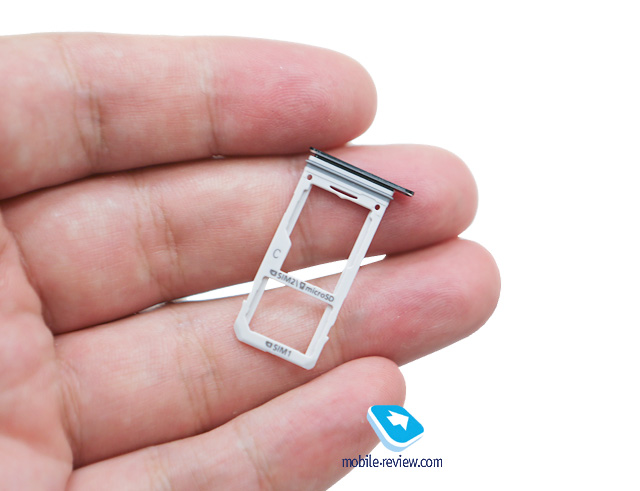
In terms of materials, there are no discoveries, it is exactly the same 7000 aluminum alloy, the coating is the same as in S8/S8+, the structure of the varnish has changed, it is more scratch-resistant.
You won't be able to insert the S-Pen the wrong way around; foolproof protection was added by default. As well as all the usual options for the stylus, you can write by hand on the locked screen, add reminders (expanded functionality) and mark individual events. The S-Pen itself has not undergone major changes compared to the Note 7; it feels exactly the same pen, comfortable and practical.
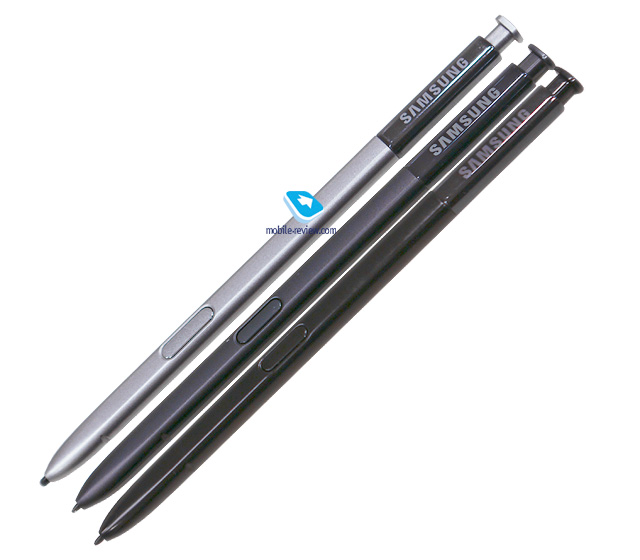
The iris scanner has changed, it now has an updated version of hardware and software, it works a little faster in the dark, and about the same in daylight. We have added a new learning algorithm; the more often and under different conditions you use the scanner, the better and faster it recognizes your eyes. The face scanner has become a little more complex, but it is still less secure than the iris scanner.
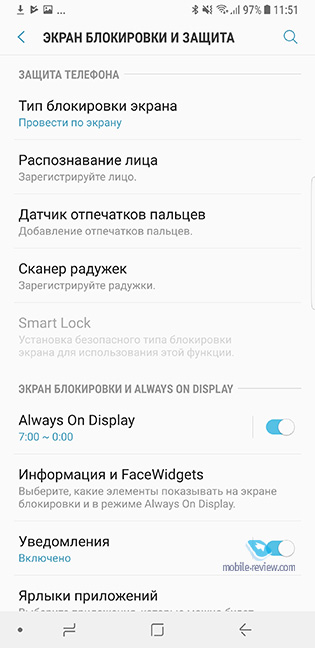
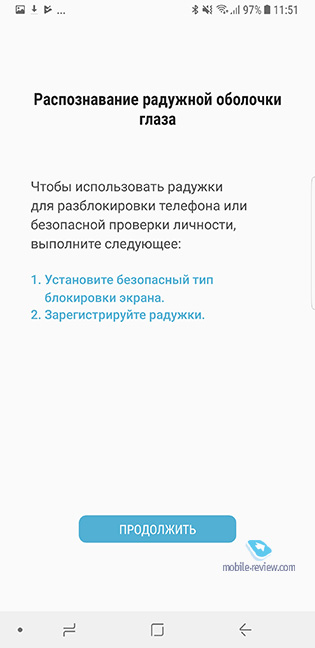

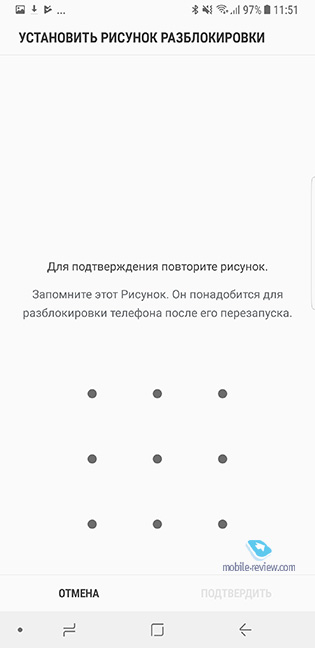
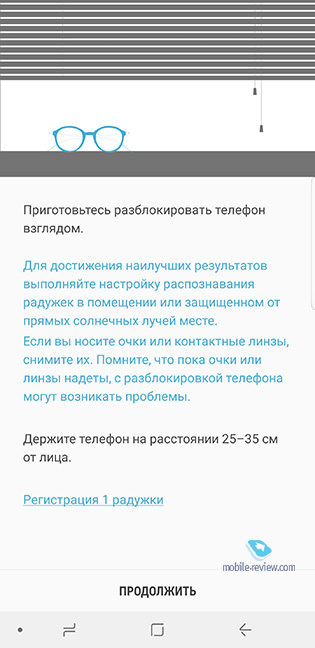

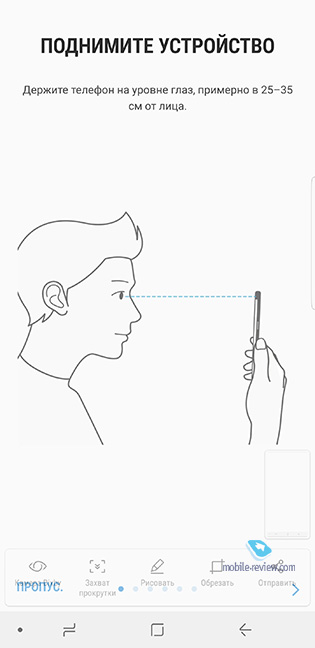

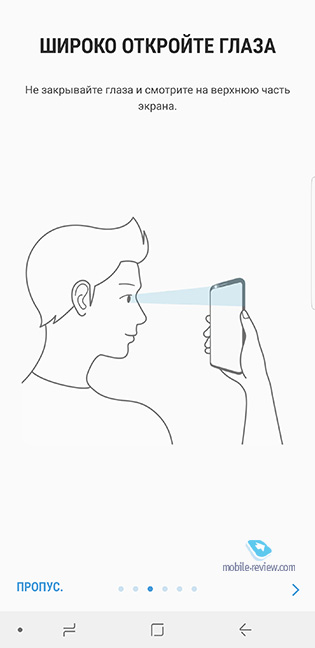

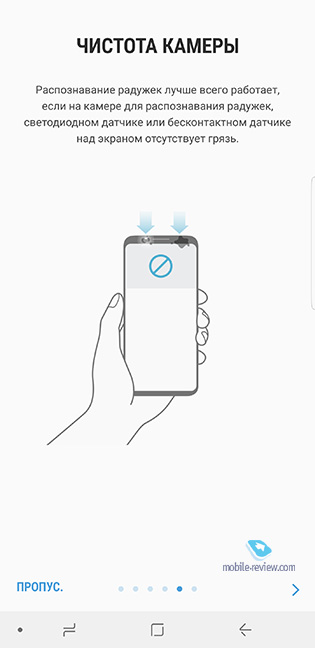

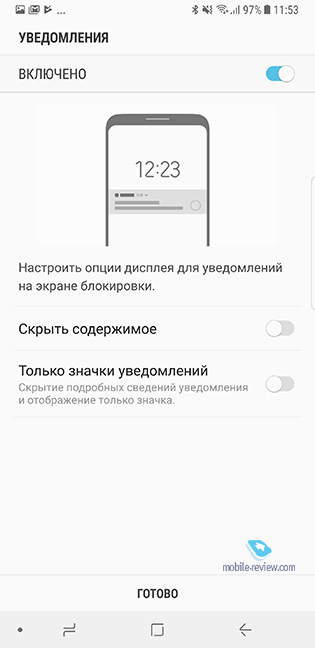

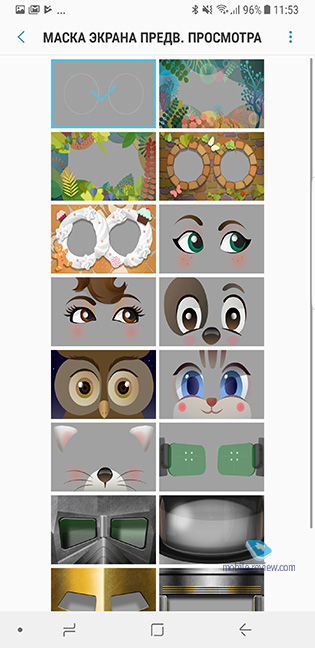
Display
The screen diagonal is 6.3 inches, but here the difference with the S8+ is practically not felt; the added 0.1 inches had a minimal effect on the height of the device, and not on its width. And if the S8+ was a huge TV, then this effect is only enhanced here. Shovel or not, this question will definitely be asked constantly, but when you watch a movie on this screen once, this question will disappear by itself. Geometry is the same 2 to 1, resolution is 2K, or, more precisely, QuadHD+. The screen type is SuperAMOLED, but, as usual, this is the latest generation, in which many characteristics invisible at first glance have been improved in small ways:
- better color gamut;
- new algorithm for assessing external lighting, RGB light sensor;
- new DSP for on-screen image processing, integrated with Bixby;
- new color profiles for developers and users.
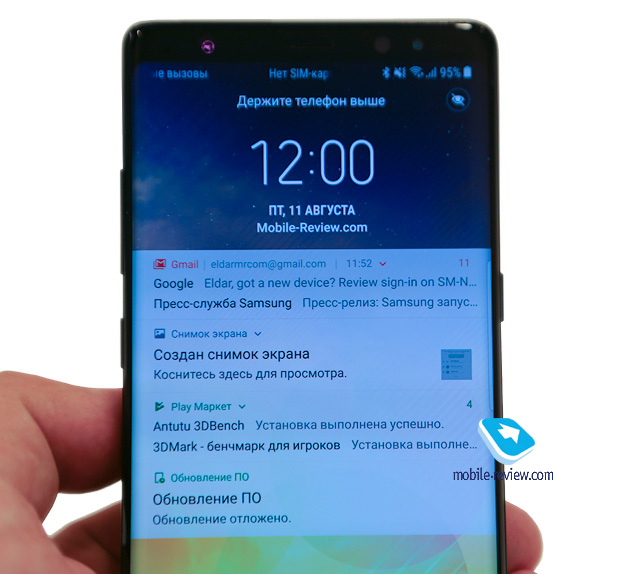
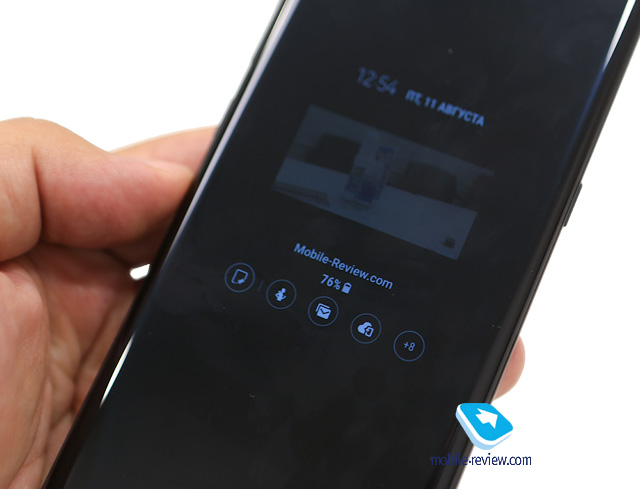
IN real life It’s almost impossible to see a strong difference between the screen of the S8+ and Note 8; the screens simply behave differently in different lighting conditions; in order to appreciate this difference, you need to use them. Therefore, after the presentation, many will say that the screens are equivalent, and, perhaps, for typical situations this is true. But for difficult situations, the Note 8 will win, as usual, the latest flagship has the latest screen in terms of technology.

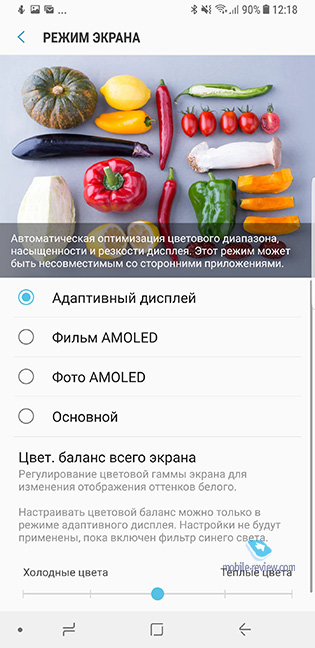
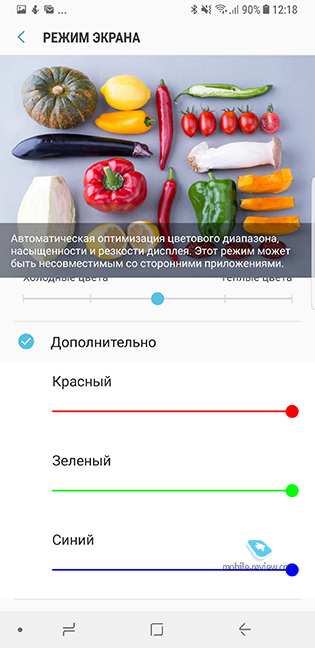

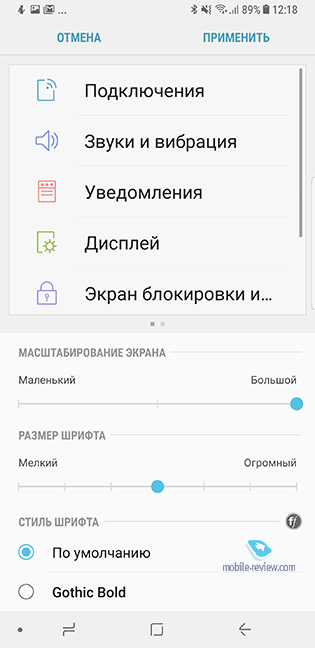



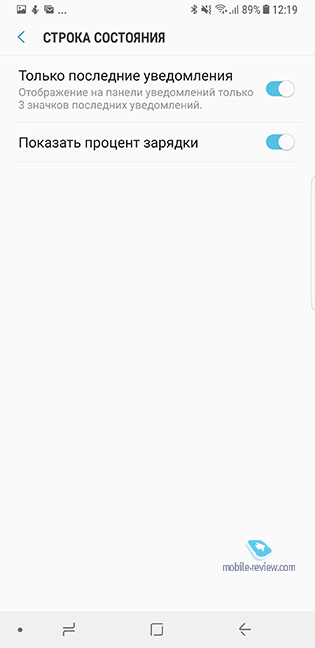
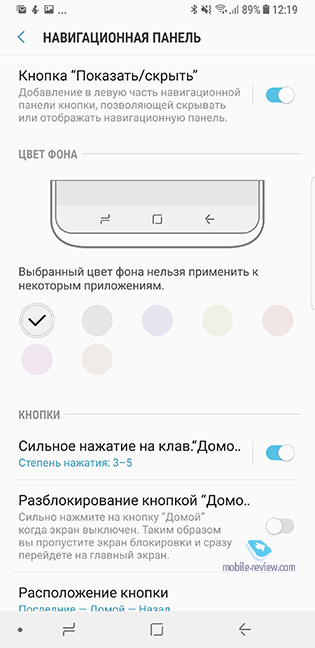
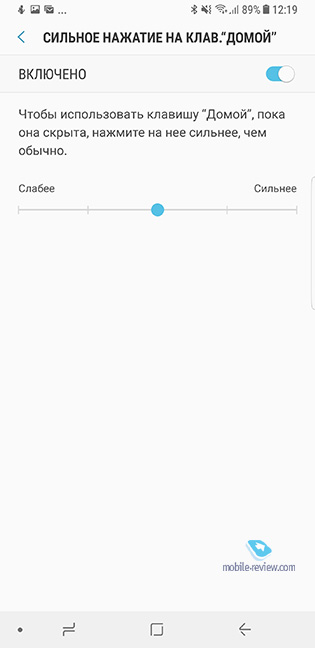
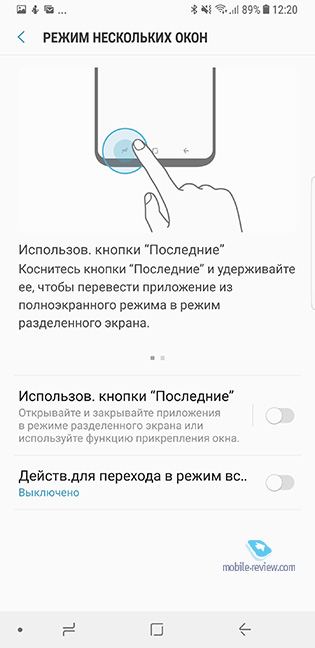

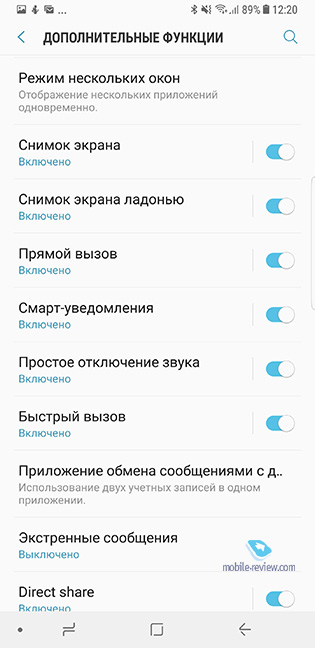

Memory, RAM, chipset and performance
I don't understand why China always gets versions of devices with more memory. So, in the USA and Europe the model will appear with a RAM capacity of 6 GB; a device with 8 GB of RAM will be released for the Chinese market a little later. Built-in memory 64 GB, plus memory cards up to 2 TB. A version with 128 GB of internal memory will appear later, availability in Russia is unknown.
A model with Snapdragon 835 (10 nm) is coming out for the USA, but for the rest of the world, including Russia, it will be Exynos 8895 (also 10 nm), which is well known to us from the S8/S8+.
The performance of the chipset is typical for current models, but look at the results for yourself.
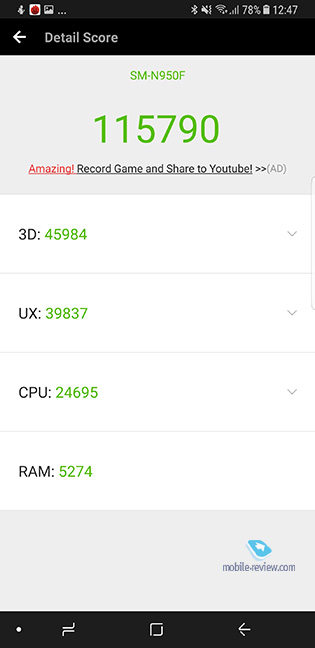
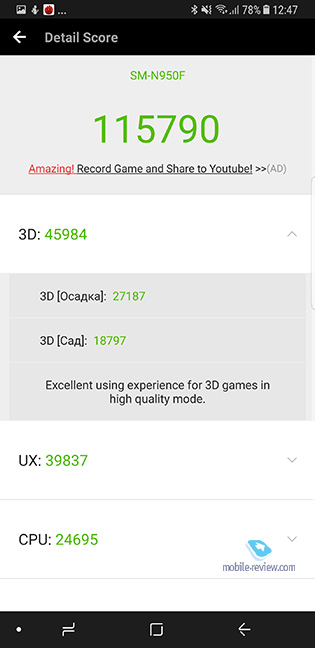

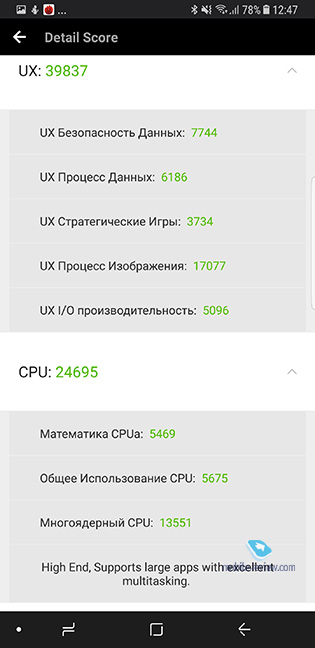
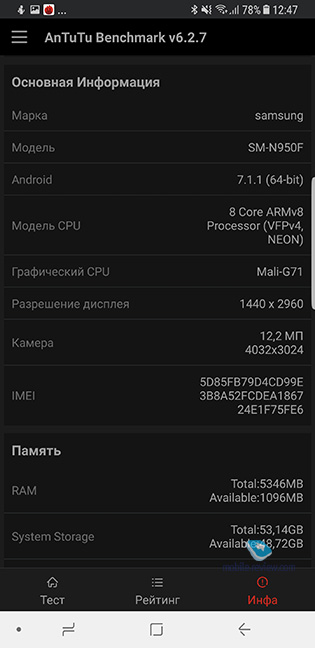
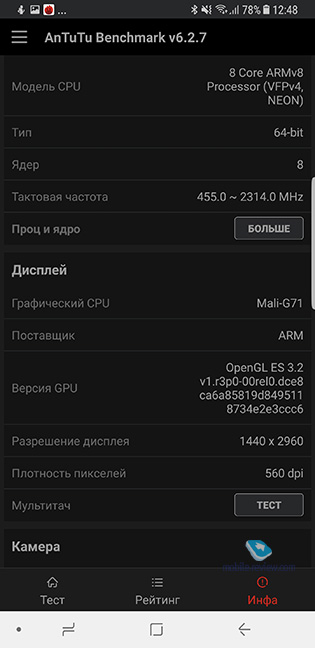
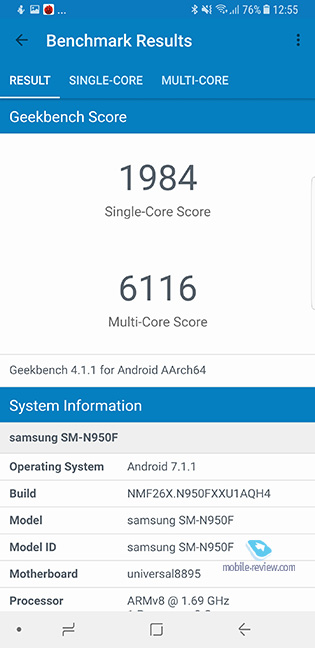

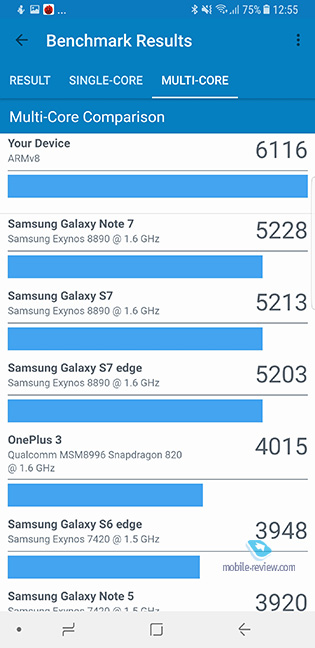

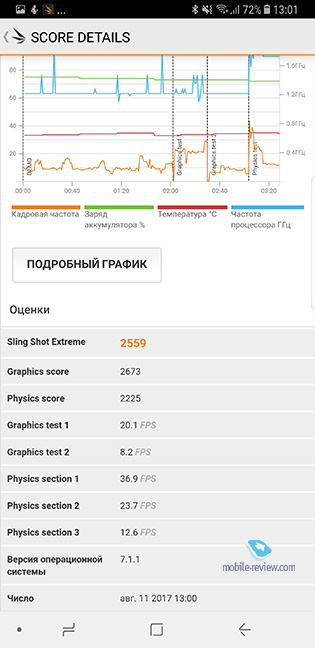

Battery
The Li-Ion battery is 3300 mAh, which is slightly smaller than the battery installed in the S8+. However, both devices provide comparable operating time under the same scenarios. For those who use the device to its fullest, this is up to one day of work, or with all sorts of settings and a skillful approach, two to three days of work and 7-8 hours of screen work.
At the moment, the S8+ is the longest-lived flagship, especially with this screen size. In Note 8 we see the same thing. As usual, there is wireless charging built into the case, fast charging and an extreme power saving mode, everything is unchanged.
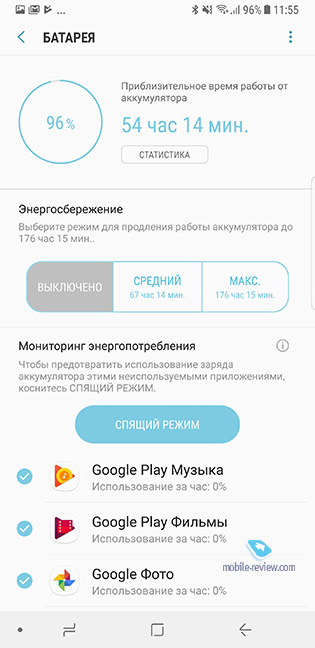
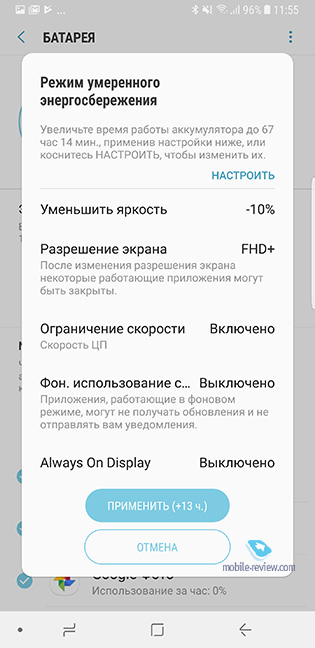
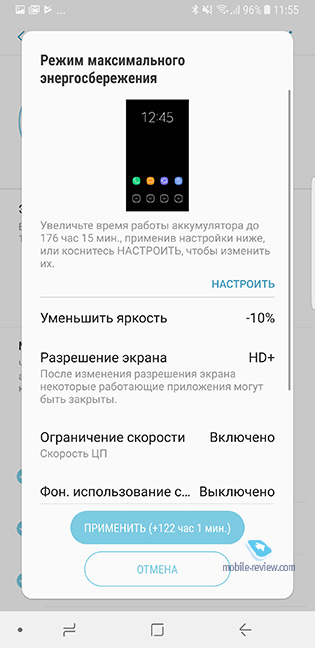
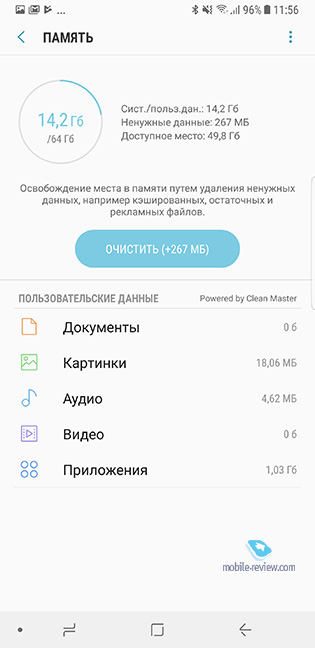
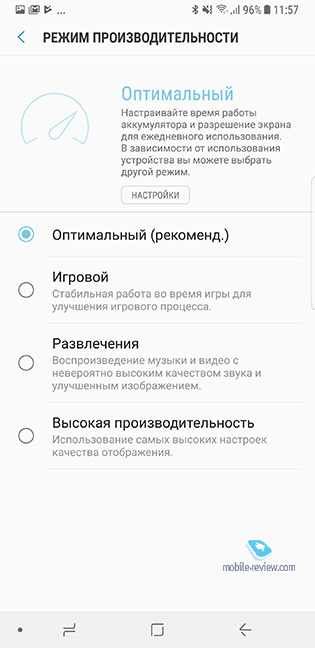
Camera
In Note 8, the main camera is made dual for the first time; formally, the main module is a 12-megapixel sensor, which we see in the S8/S8+, but the camera logic and algorithms have been completely redesigned. IN latest update S8/S8+, some of these algorithms have already been used, while maintaining the clarity of the pictures, they have become a little lighter and brighter, they don’t cut the eye with ringing clarity, they’re a little more natural. Although these differences need to be looked for, and none of the normal people will do this.
The presence of a second sensor allows for a whole range of new shooting modes, and here we see a clear answer to the iPhone 7 Plus and its two modules. Thus, selective focusing has appeared on the image - blurring the background, and the degree of this blur is regulated, post-processing is always available. Among the improvements to the camera, it should be noted greater clarity and less noise when shooting at night (this is true strong point Samsung, but it's even better), updated HDR mode (HDR+ or something similar). If other companies are trying to improve night photography by improving optics, then here they stitched two simultaneously taken images from two cameras (this is where the fact that the second module is not monochrome, but regular) comes in handy. In fact, one camera is wide-angle and the other is zoom.
It is important to know that the camera module differs in optics from the S8/S8+; a regular photo has a large zoom. There is a x2 icon in the menu, that is, this is an optical zoom, compared to the S8/S8+, the increase will be x3, which is where it came from in all the descriptions. But on the device itself the magnification is x2, which is enough for the eyes. However, see for yourself. Since the zoom is optical, there is no loss in image quality.

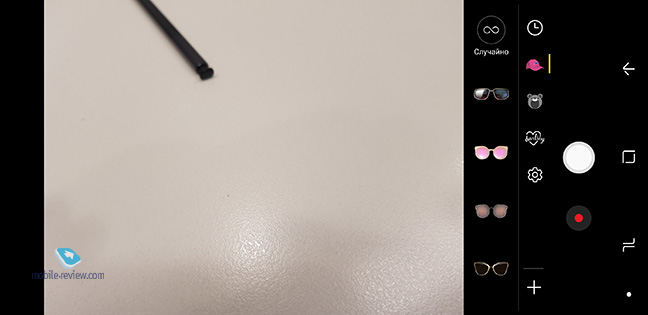

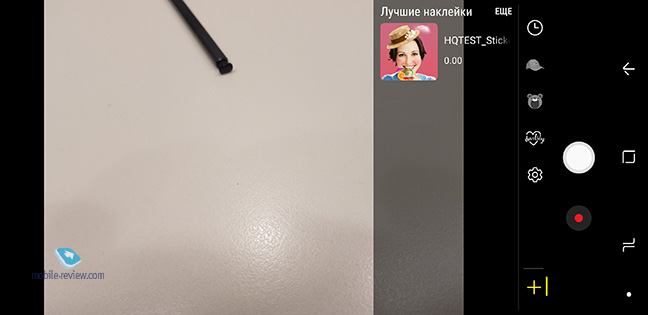


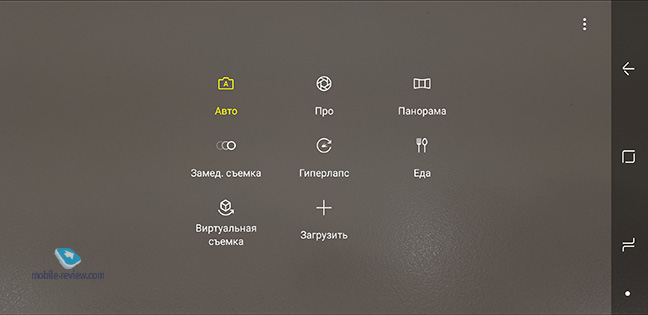
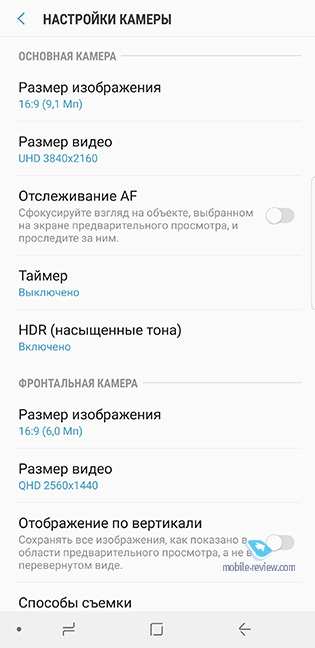
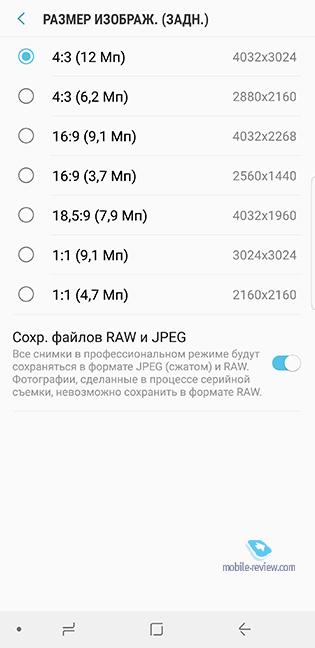

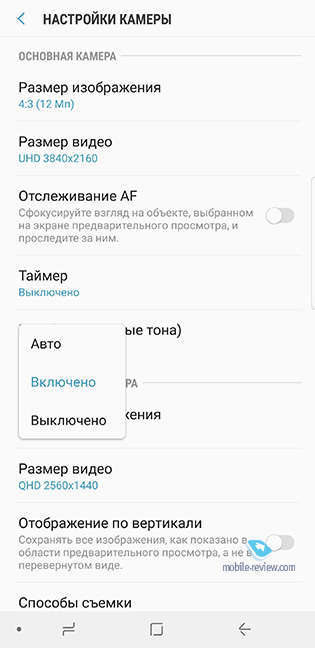
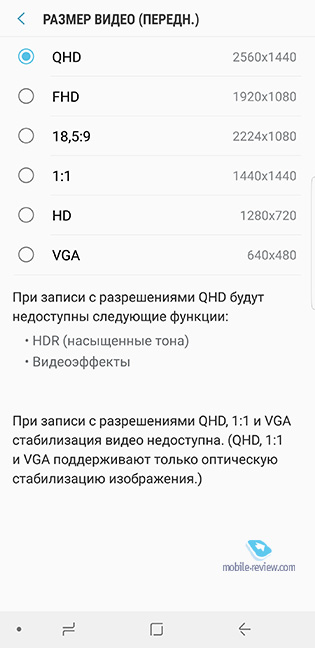


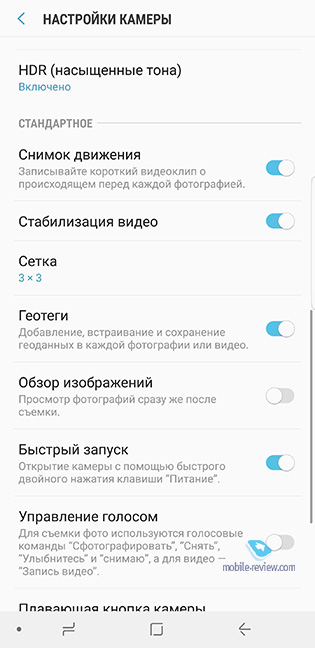
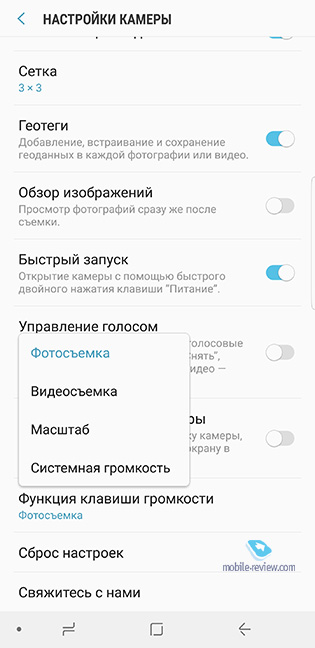
Examples of photos (tele-module)








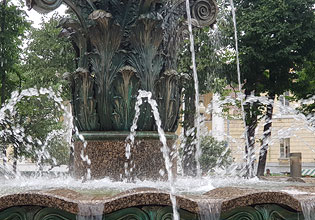


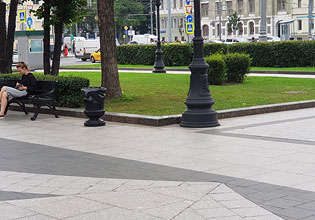


front-camera


And this is what blur looks like in pictures.
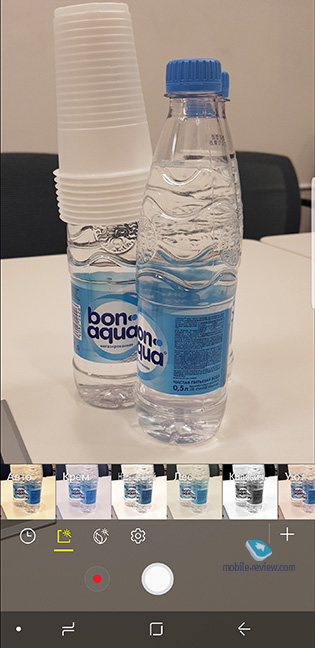
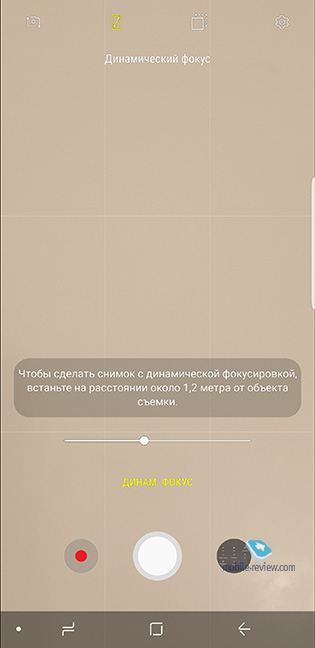
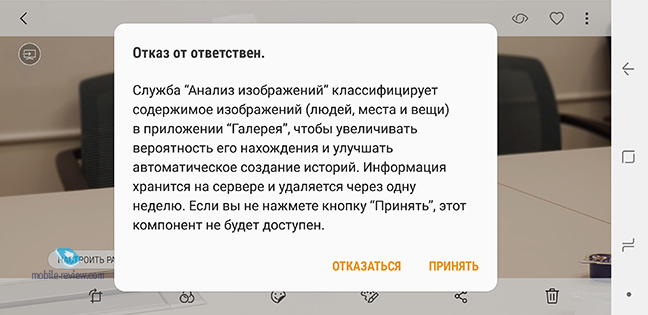
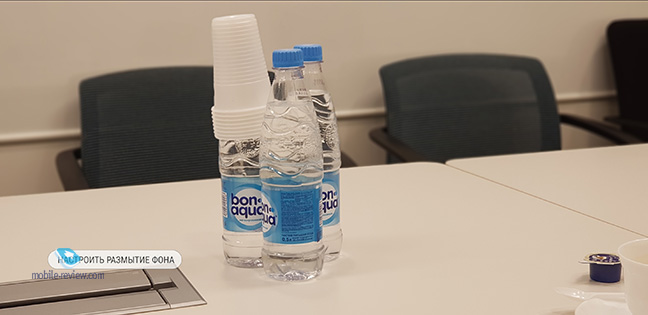


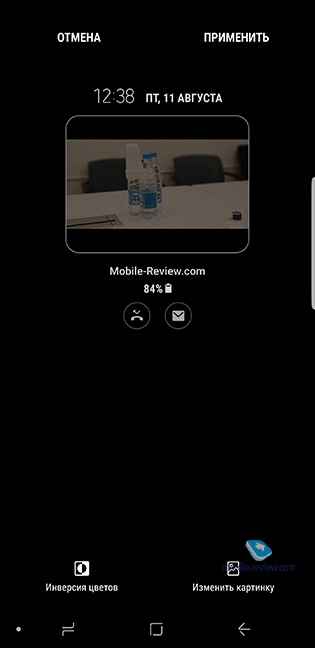
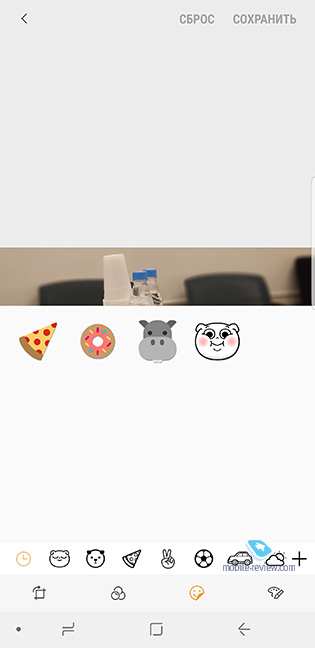


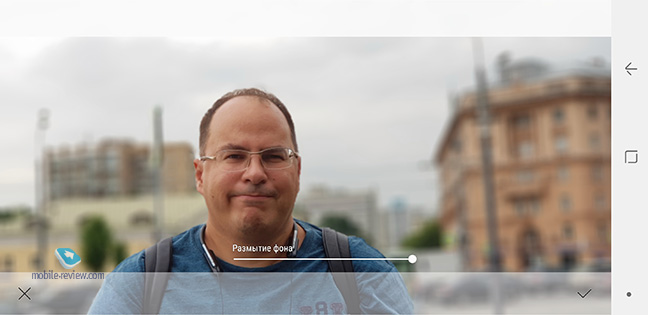
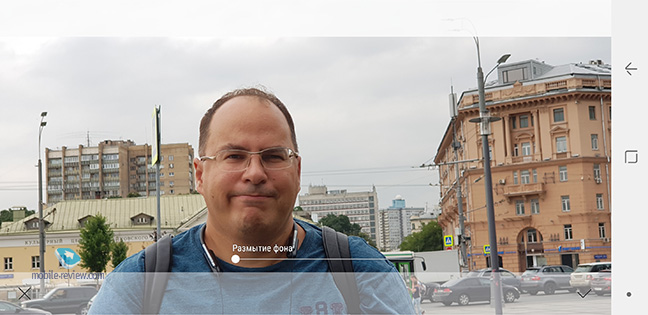


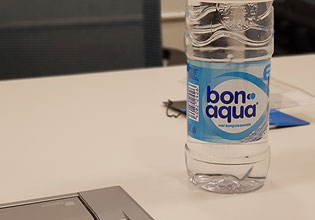
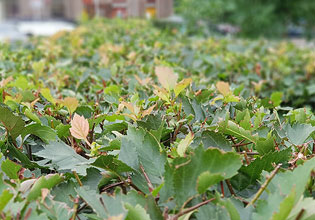



In general, we can say that the camera has not made a resounding leap forward, but evolutionarily it has been greatly improved compared to the S8/S8+ and provides new opportunities for those who are interested in photography (portrait photography, better macro). I don’t want to get into a debate about which device has a better camera; in my opinion, these are always the latest flagships from Samsung, as they provide space for creativity and the opportunity to take pictures even in difficult conditions. The Note 8 camera is very decent in different modes, including full version The review will contain more different photos a little later, but not from the prototype, but from a commercial sample.
For now, you can see a comparison of shots with the S8+.
| Galaxy Note 8 | Galaxy S8+ |
 |
 |
 |
 |
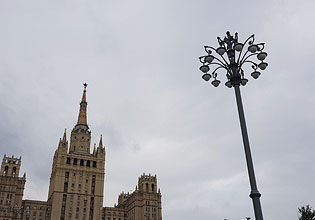 |
 |
 |
 |
 |
 |
 |
|
 |
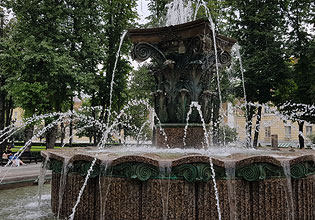 |
How the S Pen works and what it can do
Let me start with the fact that most people consider the S Pen to be an additional and practically unnecessary thing; they very rarely use the stylus built into the case. On the other hand, there is a creative minority that is accustomed to pens, loves to draw, and they, on the contrary, do not let go of the S Pen, create beautiful drawings, sketches, in a word, constantly use the stylus. These two categories of people will never be able to understand each other, they have too much different tasks and needs. Unfortunately, I never learned to draw something other than stick-stick-circle, and ultimately a little man, so I consider myself to be among the majority without any special artistic talents. For people like me, there are coloring pages, you can paint over the templates, it looks very beautiful.

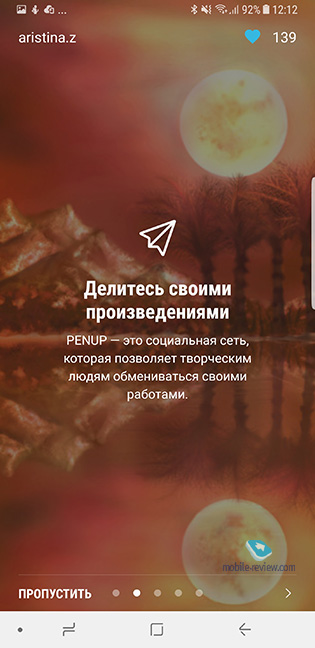




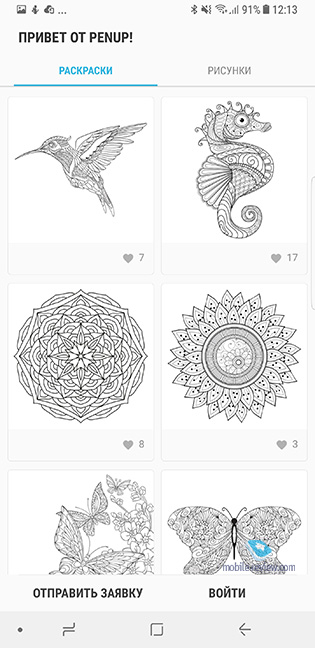


For me, the S Pen is the ability to leave a quick note, write on the screen, without even unlocking the phone. This is very useful in meetings when you need to remember something and don't need to write it down in a notebook. Short notes on the run, which are also synchronized with the cloud. Now you can record not only one screen, it can be endless, you scroll through it vertically, plus there is the ability to leave it on the waiting screen, pin it in one place.
But perhaps the most important thing is the ability to take a screenshot of a page that does not fit on the entire screen. The function appeared in Note 5; it has come in handy more than once for me to show certain things, to instantly send them as one file, rather than torn pages.
Another important point is the ability to take a screenshot anywhere on the screen and immediately draw something on it, cut out a piece. It's also interesting for those who work with graphics and the like.
From the useful side, I’ll tell you about the ability to recognize text in pictures, that is, you save everything that you photographed or took a screenshot of, not just as graphics, you can remove the text from there. This is an indispensable tool in my work.
A new feature is the translation of individual words; in this mode, you set the direction of translation and you can spy on any words that will be immediately shown. The Google engine is used, the function is pleasant for those who study or constantly correspond in different languages, not always having a dictionary at hand.
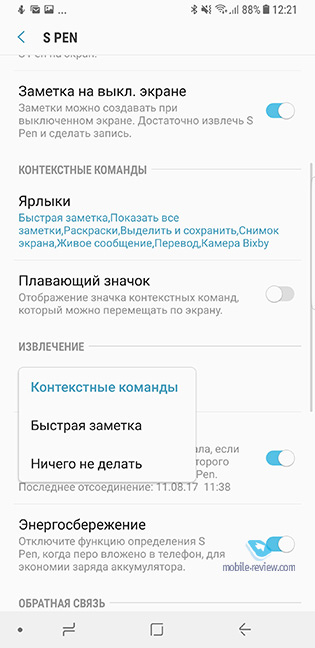

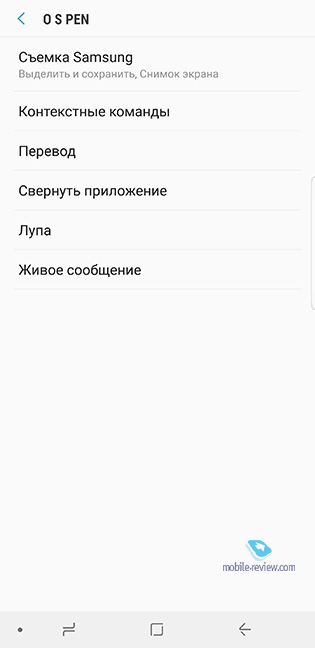
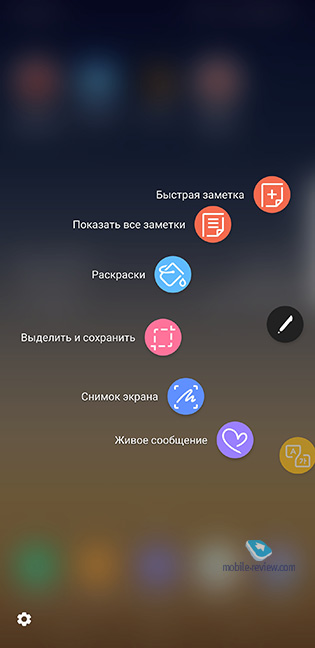

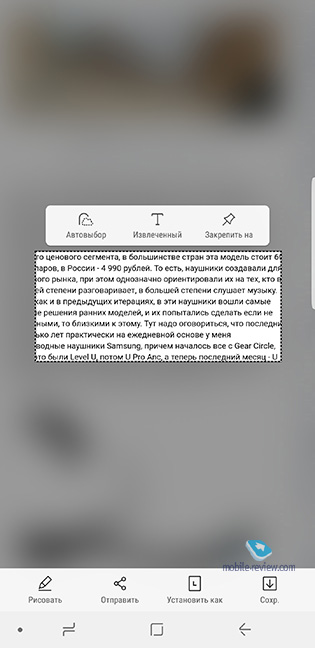
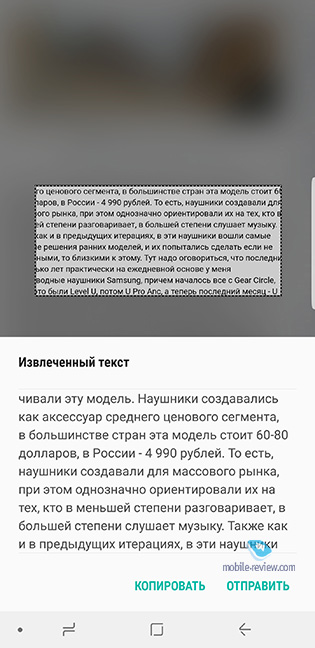
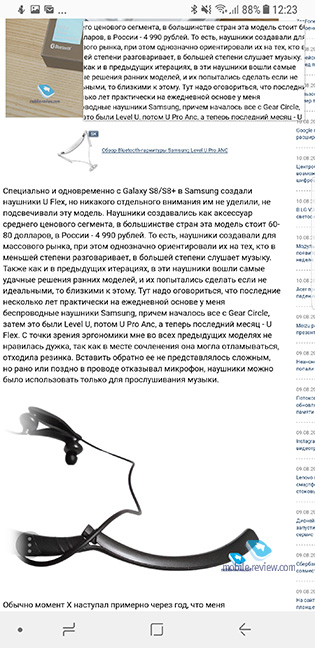




The fact that the S Pen works underwater, in my opinion, is nonsense. It is unlikely that scuba divers will use a phone while diving, and even at a depth of two meters it will simply leak. But the fact that you can write in the rain is a real application scenario that is easy to imagine.
The pen, as before, takes into account 2048 degrees of pressure. The S Note app has a drawing mode where you can mix colors, something that wasn't available before.
I can’t say that I use the S Pen very actively, sometimes it happens that I don’t take it out for several days, sometimes a couple of times a day I draw something on screenshots, cut out pictures. But I can say for sure that it helps me quickly complete routine tasks that I encounter from time to time. There is simply nothing like this in other phones. Handwritten text recognition has become noticeably better, but, in my opinion, this is not as convenient as simply typing text on the keyboard, although perhaps someone thinks the opposite. I am sure that there are fewer and fewer people writing every year. And therefore, the S Pen is not so much for writing as for performing tasks in which the stylus is difficult to replace with a finger.
R'иджет от SocialMart
Impression
I did not have any high expectations from this device, since I have known it for a long time. The main changes that appeared compared to the S8+ are the presence of the S Pen, a slightly different body shape, which is not fundamental, as well as a slightly larger screen. The most important thing is the new camera module, which gives noticeably more space for creativity, and I like it. As well as the fact that the technique allows you to pull out pictures that otherwise would not have turned out.
In Russia, sales of Note 8 will begin in the second half of September at a price of 69,990 rubles; as usual, pre-orders will be open. As far as I know, those who pay for the device before the start of sales will receive it first, plus they will give a DeX station as a gift (it costs 9,990 rubles separately, a valuable gift). The price, as always for flagships, causes heated discussions and rejection by part of the audience, but sales prove that such devices sell well, and this will happen now. For those looking for a model that will last for several years, this is a very good choice that is worth considering carefully. It’s interesting that more programs are being adapted for the DeX station, for example, a version of World of Tanks is appearing that will work with a keyboard and mouse, and other games and programs are on the way.
Let's see what they show in the new one iPhone Plus, but I don’t expect anything unusual, the stylus apparently won’t appear there, which means that, as before, these are completely different categories of products, a regular phablet versus a unique device.
My emotions from Note 8 are simple - there is no delight, this is a well-known device, as if I bought comfortable shoes in which my feet immediately feel good. Everything is in its place, everything is correctly located. And a little more than that, I really missed the S Pen, and the fact that it’s back is good. The camera is simply even more pleasing than before. Pleases with the possibilities. The review will be in September, so I’ll go over all the details in detail and compare the cameras with the iPhone 7 Plus. Stay in touch.
If you have money for top phone, then today you can choose the Apple iPhone X - a big step forward for the smartphone market, or the Samsung Galaxy Note 8 - the returning phablet, beloved by many.

Many people, like us, like both of these flagships, but they are very different. The iPhone X does not have a fingerprint sensor, but it can be unlocked using a 3D facial recognition scanner. The Galaxy Note 8 has a fingerprint scanner, but it's on the back and its front camera can't match the depth-sensing tricks in best phone from Apple. Conversely, the Note 8 has a multifunctional S Pen stylus, the iPhone does not yet have anything similar.
In this feature comparison, we'll check out all the strong and weak sides two monsters to determine best smartphone. For a better understanding of both devices, we recommend that you familiarize yourself with our and. Go!

iPhone X | Samsung Galaxy Note 8 |
|
Size | 143.6 x 70.9 x 7.7 mm (5.65 x 2.79 x 0.30 inches) | 162.5 x 74.8 x 8.6 mm (6.40 x 2.95 x 0.34 inches) |
174 g (6.14 oz) | 195 g (6.88 oz) |
|
Screen | 5.8-inch OLED Super Retina HD | 6.3-inch Super AMOLED |
Permission | 2436 × 1125 pixels (458 ppi) | 2960 × 1440 (522 ppi) |
OS | Android 7.1.1 Nougate |
|
Storage capacity | 64 GB, 256 GB | 64 GB, 128, 256 GB |
MicroSD card slot | ||
NFC support | Yes (Apple Pay only) | |
CPU | A11 Bionic with 64-bit architecture, M10 coprocessor | Qualcomm Snapdragon 835, Samsung Exynos 8895 |
Connection | 4G LTE, GSM, CDMA, HSPA+, 802.11a/b/g/n/ac Wi-Fi | LTE, GSM, CDMA, HSPA, EVDO, 802.11a/b/g/n/ac Wi-Fi |
Camera | Dual 12MP (both with OIS), 7MP front | Dual 12MP (both with OIS), 8MP front |
Video recording | Up to 4K@60fps, 1080p@240fps | Up to 4K at 30fps, 720p at 240fps |
Bluetooth | Yes, version 5.0 | Yes, version 5.0 |
Fingerprint sensor | No, face scanner | |
Other sensors | Barometer, 3-axis gyroscope, accelerometer, proximity sensor, ambient light sensor | Accelerometer, barometer, gyroscope, geomagnetic sensor, heart rate, proximity, aperture, pressure |
Waterproof | ||
Battery | Not known yet 21 hours talk time, 12 hours web browsing, 13 hours video playback and up to 60 hours audio playback Fast charging allows you to charge up to 50% in 30 minutes, wireless charging (Qi standard) | 22 hours talk time, 13 hours internet, 16 hours video playback and up to 74 hours audio playback Fast charging, wireless charging (Qi standard) |
Charging port | Wireless | |
Market area | Google Play Store |
|
Colors | Silver, Space gray | Midnight Black, Orchid Gray |
Price |
Apple calls the A11 Bionic chipset inside the iPhone X the "most powerful and smartest processor" ever found in a smartphone. While we can't fully evaluate this claim yet, there is no doubt that the processor is very powerful. The A11 Bionic contains six cores, two for high performance and four for high efficiency, and a graphics processing unit that's 30 percent faster than the one found in the A10 Fusion chip inside the iPhone 7.
![]()
All this internal power undoubtedly helps the iPhone X provide augmented reality functionality, as well as control Face technology Apple ID and TrueDepth camera system. When it comes to RAM, Apple traditionally doesn't disclose these numbers and has a habit of offering more performance with less memory than comparable Android gadgets.
The Galaxy Note 8 uses a Qualcomm Snapdragon 835 processor with an impressive 6GB of RAM. It's the chipset that delivers smooth and consistent performance on many flagship Android phones, from the HTC U11 to the OnePlus 5, and it's very powerful. Having 6GB of memory at the system's disposal certainly helps with smooth performance and makes the Galaxy Note 8 one of the most powerful devices running Google's OS.
Both the iPhone X and Note 8 come with 64GB of storage as standard, but only the Note has a MicroSD slot for storage expansion. Both devices also offer 256GB versions for high price. Regardless of which device you choose, you get Bluetooth 5.0 - the latest version of the wireless protocol, with improved range, as well as NFC for payments. Galaxy Note 8 is also compatible with legacy terminals through Samsung Pay's exclusive MST technology.
Winner: Draw
Display, design and durability

These phones look and feel the best out there, which is immediately apparent when you first come across them. iPhone screen The X is dimensionless, although there's a fairly pronounced black frame on the front, as well as an add-on that houses the camera and microphone, although there's no doubt that it's one of the most futuristic designs we've ever seen.
Backside new iPhone clad in glass to ensure wireless charging, and has dual cameras. The sides are protected by a stainless steel frame and look remarkably shiny compared to the brushed aluminum of previous generations of devices. In addition, unlike older iPhones, there is no Home buttons or Touch ID is probably the biggest change. Even though the phone looks much better overall, many will miss the finger scanner feature.
Yet again, Samsung solution hardly more ideal. Due to lack of space for the sensor on the front of the phone, it was moved to back panel, to the right of dual cameras, like the Galaxy S8. Rear-mounted fingerprint sensors aren't for everyone, and a more central placement would certainly be a better solution.
In terms of overall design, thankfully the Note 8's story is a bit more positive. The smartphone has been called a super-sized Galaxy S8 in terms of appearance, and this is not a completely fair statement. After all, the Galaxy S8 offers an excellent package with a headphone jack. The Note 8 has a 6.3-inch 2960 x 1440 AMOLED panel, which can't match the iPhone's more powerful 5.8-inch 2,436 x 1,125 pixel OLED Super Retina HD screen configuration.
In terms of durability, both phones are primarily made of glass and are water-resistant. The iPhone X is IP67 rated and can withstand up to a meter of water for 30 minutes, while the Note 8 has a slightly better IP68 rating that only allows an extra half hour of submersion.
Winner: iPhone X

While we don't have any reliable battery tests for the iPhone X, Apple says you can safely expect up to 21 hours of talk time. That's two hours more than the iPhone 7 Plus offered. Moreover, you can charge it by wireless network, since iPhone X supports the open Qi standard used by many other phone manufacturers. Apple says the iPhone X will charge faster than previous ones, and the high-speed adapter included with the device will provide up to 50 percent charge in 30 minutes.
The Galaxy Note 8 also offers wireless and fast charging, and since we've tested it, we know exactly what to expect. IN Note review 8, we managed to use about 60 percent of the charge, from morning to about 7 p.m., with moderate use. This is an excellent result for a 3,300 mAh battery.
We won't know exactly how the iPhone X fares in our tests until we get it for review; for this reason it's a draw.
Winner: Draw

The cameras on the phones being compared are remarkably similar. Both the iPhone X and Galaxy Note 8 feature dual 12-megapixel sensors that combine wide-angle and telephoto lenses. The iPhone X has f/1.8 and f/2.4 aperture lenses, while the Note 8 has f/1.7 and f/2.4 apertures. Every lens on these smartphones supports optical stabilization images to reduce blur in your photos.
Both smartphones allow you to take portrait photos with bokeh, although the iPhone allows you to manipulate the light source in such photos, with new feature"Portrait Lighting" The iPhone X can also achieve better performance thanks to its front cameras, and new system Apple's True Depth. Meanwhile, the Note 8 has an 8-megapixel selfie shooter on the front.
When taking photos, you'll likely get fantastic results from either camera. But, the iPhone X can do a little more once you get to shooting video. While the Note 8 only supports 4K recording at 30fps and 240fps at 720p, Apple's flagship can handle 4K at 60fps and 240fps at 1080p.
There's one more camera-related feature in the iPhone X that we haven't mentioned yet, and it's telling: Face ID. You can unlock Phone X just by looking at it. And although Samsung uses retinal verification for verification in the Note 8, this system is easier to fool and less secure. We're not sure we'll use our eyes to access gadgets in the future, but depth-aware facial scans will be a major breakthrough. You can even use iPhone X to transform your words and expressions into animated emoji icons in real time, with Apple features Animoji.
Winner: iPhone X

Out of the box, the iPhone X will come with iOS 11. This newest version mobile operating system Apple, which has a completely new app store, a redesigned notification center and control center, and many small improvements. Galaxy Note 8 ships with Android 7.1.1 Nougat, although it's not latest version OS 8.0 Oreo, update due to arrive early 2018.
There's no point in comparing iOS and Android - both platforms are excellent in their own right, and the choice is really a matter of preference. However, there are several tools and features that you will only find in one or the other. The most obvious is Samsung's S Pen.
The Galaxy Note 8 stylus is a powerful tool for jotting down ideas and taking quick notes. It's a more advanced tool than you'd expect and can record up to 4,096 pressure levels. The phablet's always-on screen means you can take notes without waking up your phone - a very useful software tweak. Hold the pen over the text you're reading and it will scroll the screen on the fly or zoom in on any area you want.
Another new feature in the Note 8, called App Pair, lets you pair certain apps together so you can run them at the same time. Open both apps at once and they will appear in split window mode. If you frequently multitask, this could be a useful addition. Samsung also has a DeX station that turns your phone into a desktop computer.
If we move away from innovations in the iPhone, to its software, then you realize that there is not much new here. The Note 8 provides a completely unique method of interaction that most other phones don't offer, which is why it wins here.
Winner: Galaxy Note 8

The iPhone X will be available starting November 3rd with pre-orders starting October 27th. The Galaxy Note 8 is available for pre-order now and has already started shipping from September 15th.
Either way, you will spend a lot of money. With a starting price of $1,000, the iPhone X has crossed a threshold that most high-end smartphones have managed to overcome until now. Prices for the Galaxy Note 8 start at $930, which is just $70 less, although Samsung is much more generous with add-ons and promotions. If you buy the Note 8 right now, you can get the Gear 360 camera or 128GB memory card and a wireless charging stand.
Samsung will also give you up to $300 off if you replace your older Galaxy S, iPhone, Google Pixel or LG device. Many dealers are also already offering promotions for users to upgrade from older iPhones to X.
But, the Galaxy Note 8 offers more options and extras when you buy it, and it also costs a little less.
Winner: Galaxy Note 8
Overall Winner: Draw
To summarize, I would like to add that the Galaxy Note 8 is an excellent and modern smartphone, and the iPhone X looks like a gadget of the future in all respects. But, each has its own advantages, which ultimately compensate for each other's disadvantages.
You can't go wrong in any case by buying one of the mentioned phones.
Samsung is great for those looking for the best versatility, multitasking and the ability to take notes. If you want to be on the cutting edge of design, visualization and augmented reality, Apple's latest phone is your choice. Just remember, no matter what you focus on, you can’t go wrong.
If you find an error, please highlight a piece of text and click Ctrl+Enter.
This year, Samsung has radically changed its designs in terms of design. And many liked this state of affairs. The new Korean flagships flaunt a futuristic appearance, an elongated “limitless” display and mega-powerful technical filling. These products were rightfully considered the most technologically advanced devices on the market, but that was until the long-awaited was introduced. This is a real “monster” created for advanced users. He has absorbed all the most advanced things. However, after its announcement, the question arises about the feasibility of purchasing it, because the eighth “Laptop” is very expensive. Although it has advantages over, they are not very significant. Let's compare these two flagships from Samsung to find out which is better to buy.
Equipment
In terms of the set of accessories in the box, the devices are identical - these are excellent vacuum AKG headphones, OTG adapter, adapter for microUSB connector, block fast charging, sync cable and SIM compartment needle.
Appearance and dimensions of Samsung Galaxy Note 8 vs Galaxy S8+
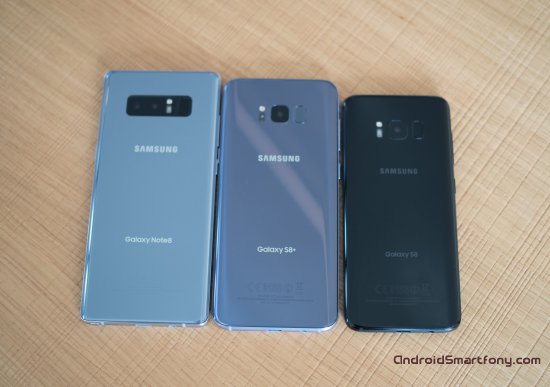
Both smartphones have a similar appearance. The materials used are the same, the edges are made of metal, and the back and front are covered with Gorilla Glass 5. However, the Galaxy Note 8 has a more austere, but at the same time more solid appearance. Compared to the rounded body of the Galaxy S8+, it has more sharp corners. It resembles an elongated tile. However, like its current opponent, the Note 8 fits perfectly in the hand due to the fact that the back is curved on the sides. Nothing cuts into the palm.
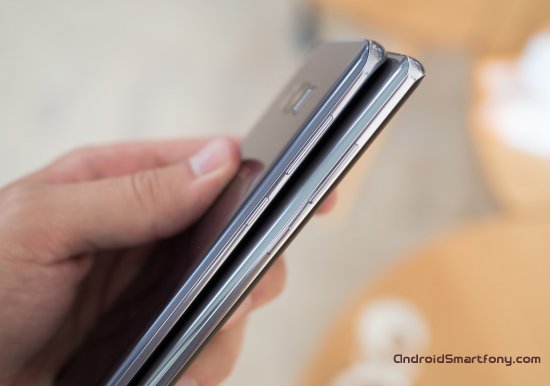
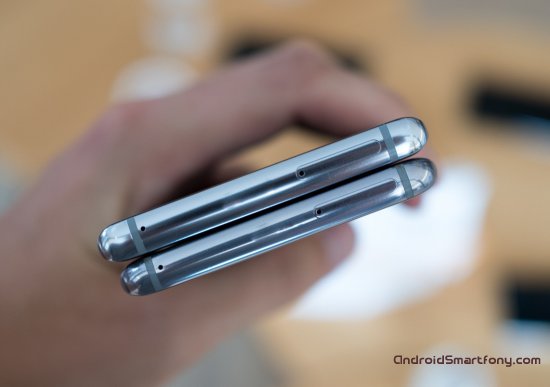
There is no difference in the location of the various components on the case. Discrepancies between devices are present only in two areas. Firstly, the Galaxy S8+ does not have a niche on the bottom, which is the “feature” of its rival. Secondly, Galaxy Note 8, for the first time in the company’s history, has a camera consisting of two lenses. The freshly baked phablet can, of course, be proud of this. However, the lack of thought in the placement of this dual photo module, combined with a fingerprint scanner, can greatly spoil the mood at the very first acquaintance with the gadget. It would have been smarter to place it vertically, but for some reason Korean engineers decided to make it horizontal. This dubious design move does not look very nice, and besides, the fingerprint sensor is raised high, making it very difficult to reach. The iris detection sensor, which works a little better in the Galaxy Note 8 than in the Galaxy S8+, can save the situation. The Newbie is 0.5 inches thicker, 1.4 mm wider, 3 mm longer and 22 grams heavier. Both smartphones are equipped with a standard for protecting the case from the external environment. Interestingly, the electronic pen in the Galaxy Note 8 works even in water, because it is protected to the same standard.
Galaxy Note 8 vs Galaxy S8 Plus screen
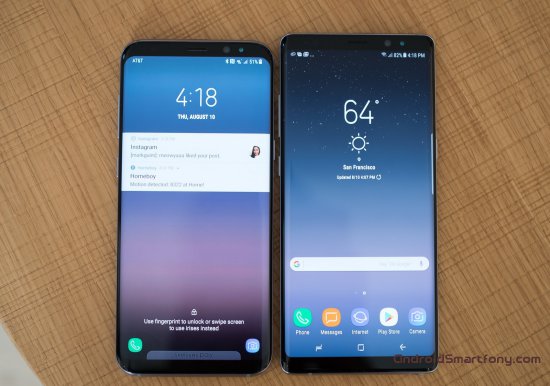
In terms of this indicator, the heroes of our comparative review have practically no differences, except for the diagonal in the Galaxy Note 8 that has increased by only 0.1 inches. During use, this difference is not particularly noticeable, since it is not that big. The matrices are absolutely identical - SuperAMOLED with a resolution of 1440 x 2960 pixels. The impressions from both screens are the same. Pixel density - 521 ppi versus 529.
Cameras Galaxy Note 8 vs S8 Plus

The most significant difference between the devices lies in the photographic parameters. The fact is that the developers finally equipped their brainchild with a dual 12 + 12 megapixel camera, and it became the Galaxy Note 8. Thanks to an additional telephoto lens with an f/2.4 aperture, the new product can not only shoot in bokeh mode, but also double the image without loss quality. The main module is wide-angle, it is equipped with f/1.7 aperture. In addition, the camera algorithms have been improved, resulting in improved frame quality. Although the opponent’s capabilities are a little more modest, they still allow you to take excellent pictures. If you do not pay attention to the lack of background blur and 2x optical zoom in the Galaxy S8+, the cameras of both devices are very similar, because the resolution is the same.
Equipment and software

The company did not change the technical component of the Galaxy Note 8. Like its current rival, it is built on the 8-core Snapdragon 835 and Exynos 8895 chipsets. The processor version depends, as before, on the sales region. The Galaxy S8+ model can be purchased with 4 or 6 GB of RAM on board, and the Notebook only has a 6 GB memory module, while the choice of flash memory is larger - 64, 128 or 256 GB. The Galaxy S8+ does not have a 256 GB drive, but few people are interested in it. As for wireless modules, the devices are absolutely equal in this regard.
There are differences in battery capacity. Surprisingly, the Galaxy Note 8 has a weaker battery by a good 200 mAh. This decision seems strange also taking into account the fact that this smartphone thicker.
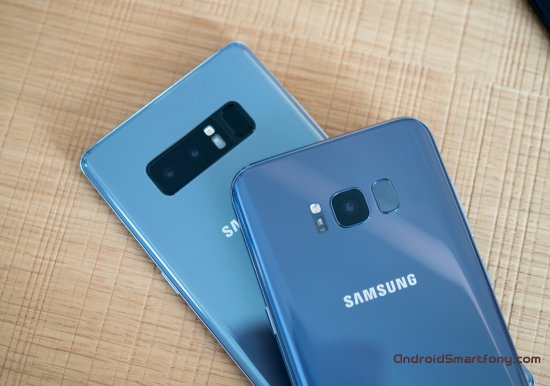
The software content in both Korean products is provided by proprietary firmware, which is based on the seventh version of Android. The interface in the Galaxy Note 8 is designed for the S-Pen stylus, so there are some differences in the OS. Also, the recently introduced device was equipped with an interesting function of adding a shortcut to the side panel, by clicking on which you can open two applications in one click. They immediately work together in split-screen mode, which is quite convenient.
